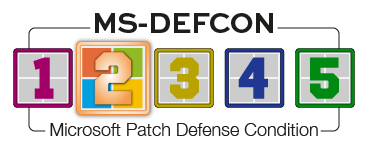By Susan Bradley
Microsoft regularly releases updates. Previews are betas.
In the first week of each month, Microsoft issues the non-security Office releases that PKCano documents in the AskWoody blog. In the second week of each month, Microsoft releases its main security patches. Finally, in the last week, Microsoft releases previews of the following month’s non-security fixes.
Previews do not go through the same rigorous testing as the security updates. (Credit where it is due: Microsoft does perform basic testing of its main security updates.) As a result, issues can occur. This is why I strongly recommend that you do not install preview updates when offered for Windows 11 23H2 and Windows 10 22H2. In addition, pause all updates now while I test, vet, and approve. This is the reason I’m raising the MS-DEFCON level to 2.
Recent issues with KB5039302 for Windows 11 23H2 are a clear example of why I recommend care and patience. We reported that Microsoft had acknowledged that the update was triggering machines to reboot — repeatedly. Microsoft pulled the update.
Windows 10 KB5039299 was also released in preview to test certain changes to Copilot. Note that Microsoft has reopened the insider testing for Windows 10. Some say that Windows 10 will get another feature release, but that’s not my take. I think Microsoft is backporting some of the Copilot code to Windows 10. For one thing, we can easily see that Microsoft is making some changes unique to the European Union given the latter’s investigations.
Once again, Microsoft is making these changes gradually and admits it:
The Copilot app is now pinned to the taskbar and behaves like an app. This gives you the benefits of a typical app experience. For example, you can resize, move, and snap the window. … This feature only applies to new Windows 10 PCs and new Copilot+ PCs that ship to the European Economic Area (EEA) and other markets where Copilot is available. … For existing Windows 10 PCs, the timing of availability and delivery method will vary. This might not be available to all users because it will roll out gradually.
I am most concerned about Microsoft not providing official guidance on how to block Copilot in the Edge browser. I can determine how to remove the icon in the system tray on Windows 10. I can find out how to remove the Copilot icon from the right in the browser. But I can’t find out how to remove Copilot from the middle of the search bar in Edge.
Just the other day, a reader reached out to me after rolling back three months of updates because he didn’t want the Copilot icon on his computer. He initially went online to determine how to block it, but instead of finding good information and an easy solution, he found this post on the Microsoft Community site. The “answer” provided by a non-Microsoft contributor was completely wrong, and I felt compelled to respond.
How bad was the response in that post? It mentioned uninstalling Visual Studio Code (VSC) as part of the process. Well, there is a Copilot extension at GitHub for VSC, but our reader did not mention VSC in his original question. It turns out he didn’t have it installed, anyway. Why did the person posting, who is not an employee of Microsoft, suggest this? I think he was confusing the VSC Copilot extension with Windows Copilot. My guess is that he used AI to answer this question. There’s irony for you.
This is a perfect example of why Microsoft should be ashamed of its spotty documentation of how to manage and control Copilot.
Want good information about this? We have it:
Don’t worry: There’s nothing in there about Visual Studio Code.
If you are a business that regularly upgrades from Professional to Enterprise SKUs, I’m sure you are aware that Microsoft sort of broke that process. Normally, it’s an easy flip from Pro; now you get an error message. Microsoft acknowledged the issue in KB5036893 back in April:
After installing this update or later updates, you might face issues while upgrading from Windows Pro to a valid Windows Enterprise subscription.
Resulting from this operation, you might observe the following symptoms: – OS upgrade operations may fail, and this might be shown in the LicenseAcquisition scheduled task in Task Scheduler -> Task Scheduler Library -> Microsoft -> Windows -> Subscription as ‘Access denied error (error code 0x80070005)’ under ‘Last Run Result’.
Microsoft is working on a resolution.
Don’t install preview patches on production machines. Install previews and insider editions only on machines where you’ve accepted the risks, knowing that these are betas and should be treated as such. Make sure you either have a backup of the workstations or have a tested plan to redeploy the operating system quickly.
Now is the time to pause and review your network before the July updates are released.
Resources
- Susan’s Master Patch List
- The MS-DEFCON System explained
- BlockAPatch — Tools to help you hide or block updates
- Steve Gibson’s excellent InControl to manage feature releases



3175x175(CURRENT).thumb.jpg.b05acc060982b36f5891ba728e6d953c.jpg)
Recommended Comments
Join the conversation
You can post now and register later. If you have an account, sign in now to post with your account.
Note: Your post will require moderator approval before it will be visible.